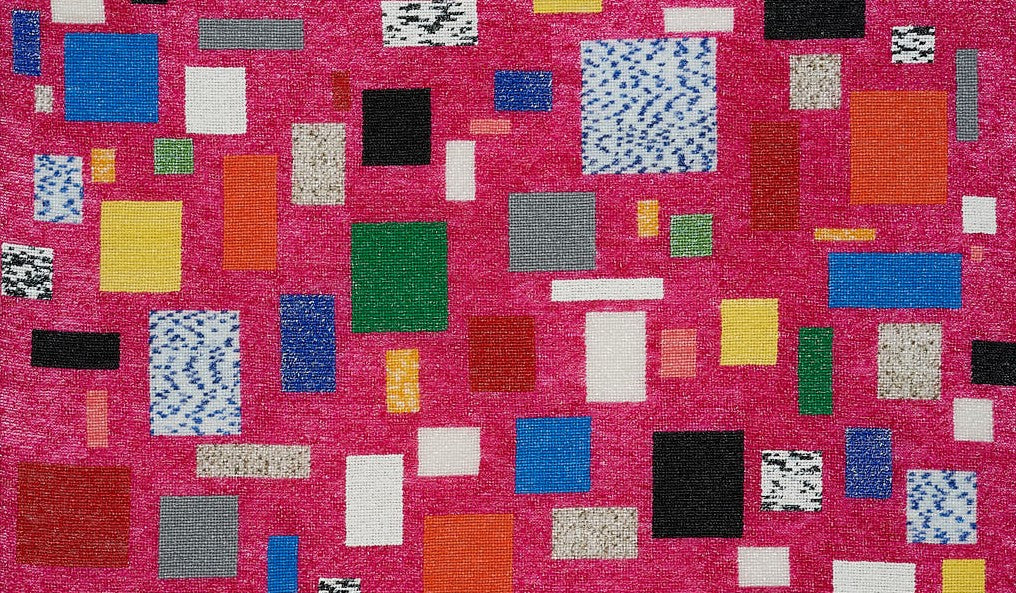
Plastic Needlepoint

All images: Peta Kruger, Used. Photographer: Sam Roberts
Australian artist Peta Kruger has created a new series of needlepoint works made from discarded plastic, called Used. Used will be exhibited at the Jam Factory in Adelaide until 22 November 2020. We asked Kruger to tell us about the series, which she created through frustration about the slow progress made to solve the problem of single-use plastic. “Solutions to the waste plastic crisis are not immediate or apparent. The ‘plastic bag ban’ across supermarkets in Australia has proven to reduce plastic waste, but the instated system of replacing lightweight plastic bags with heavy-duty plastic bags appears altogether contradictory and the slow rate of progress in this area causes me great distress and sadness. After a decade-long career in the arts I feel painfully inadequate and irritated by the lack of financial and technological resources I own to fight this issue. So I have turned to my work in search of solutions, and in doing so brought a greater sense of urgency and renewed energy to my practice.”

What materials did you use and how did you prepare them?
The plastics in this exhibition are sourced from food packaging, gift-wrapping, litter and occasionally dumpster diving. Collected plastic is sorted into colour groups, sanitised and then cut into strips for threading. The texture and thickness of each plastic dictates any further preparation that may be required. Every scrap of plastic thread created during the stitching process is also kept for recycling and weaving into future artworks.

What part does embroidery play in your artistic practice?
I use an embroidery technique called needlepoint to make the work. Needlepoint stitching is a labour-intensive process. I calculated that it takes approximately 1 hour to complete 250 stitches. The largest artwork in the exhibition consists of 105,000 stitches, taking approximately 420 hours to complete over a period of four months. I am attracted to this method of working because it demands care, patience, and resourcefulness. It provides a space for me to demonstrate opposition to the speed in which single-use plastic is manufactured and consumed.
For more information visit www.jamfactory.com.au